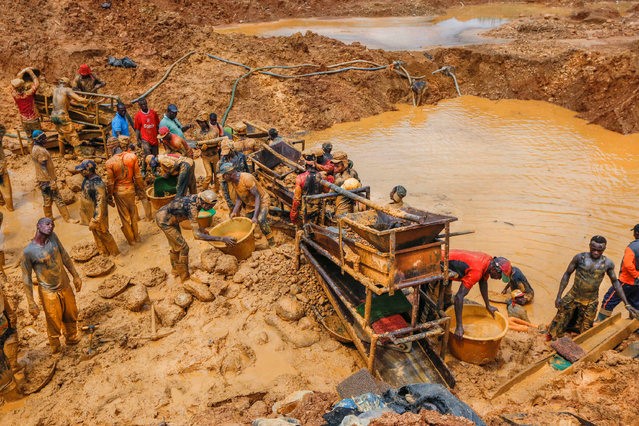
Illegal gold mining activities in Ghana contribute tremendously to the local economy of the communities within which the practice is conducted. Increased income employment opportunities and increased market activities were some benefits of the illegal mining activities identified by the illegal miners. The miners earned cash income range of US $ 2.9–22.9 daily.
Despite such developments, its activities come with several environmental challenges that government and environmentalists have fought several decades to overcome. This article forms part of a series of reports that seeks to examine the effect of illegal gold mining operations on the Ghanaian environment.
Ghana’s Mineral Endowment – A Curse than a Blessing
Ghana harbours Africa’s second largest mineral reserves of gold, diamonds, manganese and bauxites. Unfortunately, the mineral-rich country only retains the environmental burden of mining as the legacy of mining in Ghana is generally that of large unfilled holes and abandoned artisanal mining sites. Poisonous chemicals such as mercury and cyanide used by the small scale illegal miners continue to pose a serious threat to humans, fish, forest reserves and other aquatic species.

Sometimes, one is tempted to believe that the mineral endowment of Ghana is more of a curse than a blessing as the above mining problems are a case in point in most mining communities where these minerals are extracted. Uncontrolled small-scale and illegal mining activities popularly known as “galamsey” in Ghana are alarming each passing day. More people are engaging in this illegal mining, which is, mining without any permit or license from the regulatory bodies such as the Minerals Commission of Ghana.

History of Mining Activities in Ghana
Classically, mining activities in Ghana, located in West Africa, accounts for about 9.1% of Ghana’s gross domestic products (GDP) and serves as a source of employment for about 260, 662 citizens in the formal sector. According to Minerals Commission of Ghana, about 300,000–500,000 Ghanaian artisanal miners work without an official license and have contributed about $ 461.1 million to Ghana’s economy since 1989. It is therefore, not surprising that Ghana also has the largest artisanal and small-scale mining in Africa (1,100,000) with estimated dependents of 4,400,000. Most of these individuals are not miners by choice, but out of necessity.
There is evidence of gold extraction activities in Ghana as far back as the 7th and 8th centuries as gold deposits attracted Arab traders into the country. These activities were strategically located along rivers where sediments believed to contain deposits of gold were washed constantly to separate the gold grains. This was a source of wealth for these communities and individuals engaged in mining. As time went on, it was revealed that deposits of iron, limestone, kaolinite and other clay minerals exist in some quantities. Gold, however, was and is the principal mineral extracted and accounts for 90% of extracted minerals.
Although Ghana’s economy was predominantly agriculture-based, many “galamsey” miners flourished and depended on the mining and smuggling of these minerals for sale outside the country for their livelihood. These individuals sought mainly to further their own economic gain without considering the adverse social, political or environmental impacts of their actions. The differences in mode of extraction, legality of operation, quantity extracted, as well as the extractive volumes splits the mining region of Ghana into two major approaches: large-scale legal mining and small-scale illegal (galamsey) mining.
Who are the Illegal Miners?
Galamsey is a word that roots from the phrase “gather them and sell.” Ghana’s government has struggled to balance the economic boon of small-scale mining with environmental and safety protections. The Small-Scale Gold Mining Act of 1989 implemented a system for obtaining small-scale mining licenses. In 2006, an updated law stipulated that only Ghanaian citizens could receive mining licenses and required permits from the country’s Environmental Protection Agency and Forestry Commission. Although some small-scale mining operations therefore do have legal permits, many of them don’t, and many partake in illegal activities such as employing foreigners or crews of hundreds, using mercury, or heavy machinery. Most artisanal miners have elected to remain unregistered because governments have created procedurally complex regulatory environments, and have failed to provide adequate on-site support and extension services.
The methods of mining by the illegal miners have contributed to erosion, sinkholes, loss of biodiversity, and contamination of soil, groundwater and surface water. The illegal miners are also using toxic chemicals and heavy metals to process the minerals. Some of the known chemicals include cyanide, mercury, sulfuric acid and lead. Due to the chemical pollutants linked to galamsey, many waterways have morphed in colour to a gold leaving limited supplies of potable water to farms and village locals.
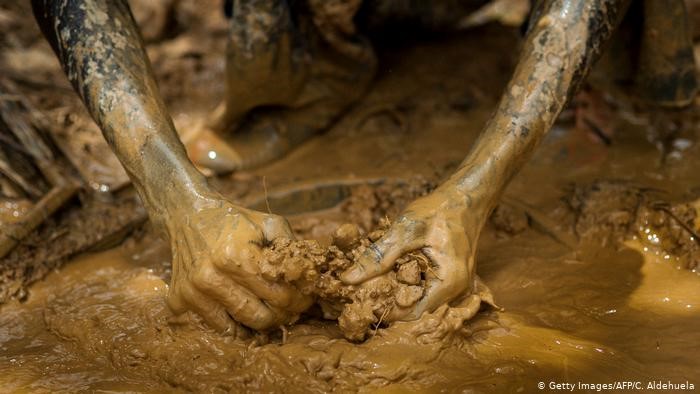
McKenzie Research argued that, “to date, mining has a poor record in terms of its contribution to ecological development, with few communities in Ghana getting significant benefits and mining sites experiencing lasting negative consequences.”
Most of the mining communities in Ghana have experienced air and water pollution, as well as other forms of environmental degradation resulting from mining processes. Most mining community residents are impoverished and live in rural settings that lack basic resources such as clean potable water.
In Ghana, illegal small-scale miners in the past were described as “poor people,” who use rudimentary tools and techniques such as picks, chisels, sluices and pans to exploit mineral deposits. This definition does not hold any longer in Ghana and specifically in the mining communities where this investigation was conducted. They now use sophisticated mining equipment and had caused massive destruction to the environment including that of the Ghana-Burkina Faso border and also posed a major threat to wildlife in Ghana’s western border with Cote d’Ivoire, a habitat that hosts the Mole National Park in Ghana.
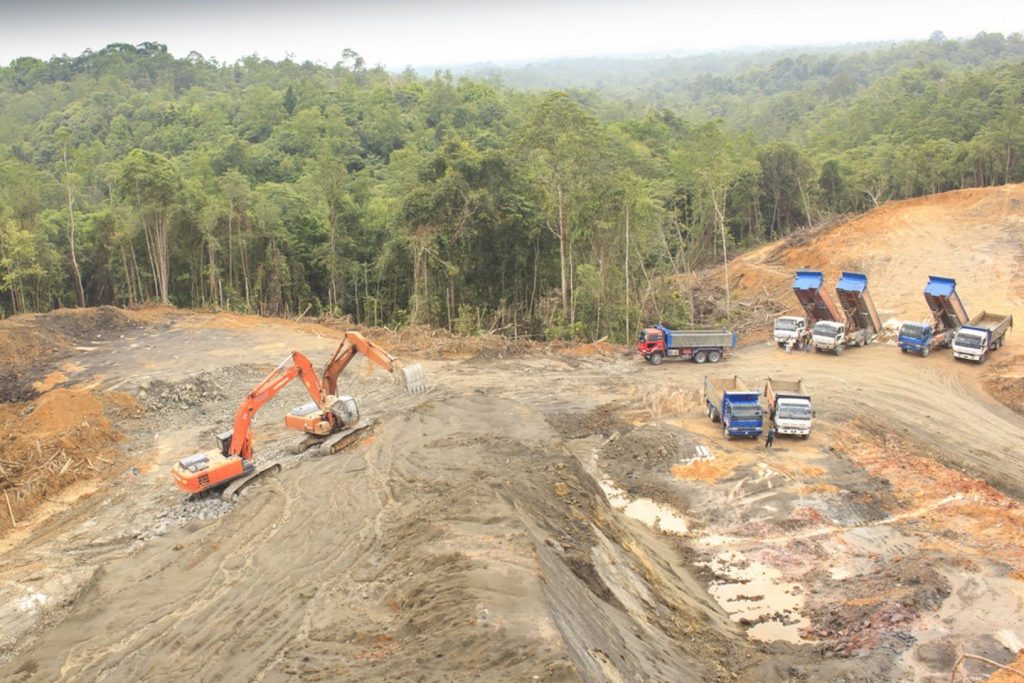
Water Pollution
The threat posed by illegal mining to the quality of water resources in Ghana has become a major public concern due to the closing down of some water treatment plants in the country. In March 2017, the Ghana Water Company warned that the spate of water pollution by illegal small scale miners is approaching alarming levels and that the country risks importing water for consumption by 2023 unless illegal mining activities are curbed.
There are four main types of mining impacts on water quality: acid mine drainage, heavy metal contamination and leaching, processing chemicals pollution and erosion and sedimentation. Water has been called “mining’s most common victim in Ghana. These chemicals, according to the Ghana’s Environmental Protection Agency, resulted in sewage with high acid levels which flow into surface water bodies and thereby posing danger to the nearby communities, especially those which depend on such water bodies for drinking and other domestic purposes. Another concern has to do with the leakage of heavy metal oxides including lead and zinc oxides, which sometimes find their way into the environment and more specifically seep into surface and underground water bodies, posing danger to aquatic life, as well as communities which depend on such resources.
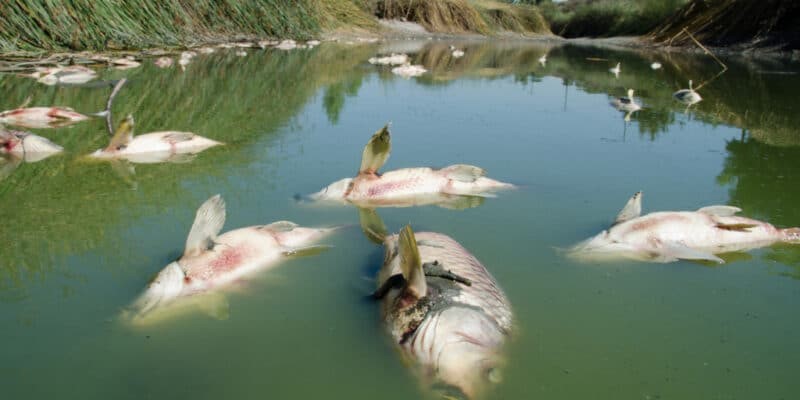
In Fenaso Community for instance, Business Day’s investigation revealed that illegal mining activities are controlled by the rich (70 per cent Chinese), who employ the use of sophisticated equipment resulting in modifying the landscapes and potentially having a long-term impact on community and the natural resources due to their physical degrading nature, as well as the use of chemicals and other harmful substances.
For the past 30 years, Fenaso town has seen increasingly rapid advances in illegal mining popularly with very sophisticated and complex equipment. This has created many challenges to Fena River, a drinking water body for the people in the Fenaso area. The first challenge is the diversion of the river path and mining on the river bed, resulting in a high level of siltation that threatens the drying up of the river.
The second problem is the introduction of high levels of suspended solids that are potential carriers of heavy metals into the river. The high level of suspended solids has also resulted in the high cost of treatment in some water treatment plants and their eventual closure as well. The third problem is that the gravels, mud, and rocks displaced during river dredging for the mineral have disrupted the natural flow of the river. Fourthly, the fishermen in the area complain of not enjoying a good harvest as in the past.
“These challenges pose a serious threat to public health in Fenaso and its environs, especially for those who still depend on the river for domestic activities such as cooking during water stress conditions,” Dr. Amoako Atta, Head of the Renal Unit of the Komfo Anokye Teaching Hospital in Ghana has stated. He continued: “there is an increase in cases of kidney disease and the use of mercury by illegal miners is a contributory factor.”
During Business Day’s tour to the mining sites, it was revealed that the occurrence of mercury in the environment was reported to be a result of its use in the gold recovery process where the inorganic form of the metal is either washed into rivers or readily vaporized into the atmosphere.
“The concentrations of mercury found in fish in the Fena River were three times higher than levels deemed safe,” the United States Environmental Protection Agency has stated in its 2020 Research Report, adding that, five tonnes of mercury is released from illegal small-scale mining operations in Ghana each year.
Apart from Fenaso Community, Business Day’s investigations revealed that the water bodies in the Obuasi Municipality have also been greatly compromised. Most streams, rivers and other water bodies in the area, where gold was mined over 100 years ago, are either polluted with chemicals or dried up. A visit to the area revealed that all the major streams and rivers namely Kwabrafo, Pompo, Nyam, Jimi, Akapori, Wheaseammo and Kunka have been polluted by mining activities.
Johnson Yeboah, an agricultural extension officer in the area said, there are no fishing activities in the Kwabrafo River as all fish species have died off due to toxification. In some other mining communities visited, the illegal miners usually operate along the banks of rivers, destroying river banks and making them liable to overflow after heavy rains. This situation has been the source of recent flooding in many mining communities. The flow of water is unregulated and flows into neighbouring homes and environs, destroying property and human life. The natural courses of most rivers and streams are diverted and in some situations, blocked to make way for mining operations.
According to Jeffrey Newman, an Opinion Leader in Tarkwa Community, the natural course of the rivers in the area had been highly diverted due to mining activities. He stated: “the soil is heavily scooped and processed for gold, after which debris is abandoned in and around the river.”
Business Day also observed that the rivers in the area are opaque brown in colour, and according to the Newman, “this was not the case in the past.” Some of the inhabitants around the rivers claimed that in the years before illegal mining activities, farmers used to drink the river water directly without treatment, due to the clear colour of the water.
Furthermore, rivers such as Pra, Ankobra, and Birim which communities along these stretches of the river depend upon are extremely polluted and local communities can no longer rely on them. The activities of illegal miners affect water quality and increase the cost of water treatment for water companies that treat the water for public consumption. The pollution is sometimes so severe that large amounts of chemicals are needed to treat the water, which then affect the quality of water supplied to the public and water companies have no other option than to shut down operations.
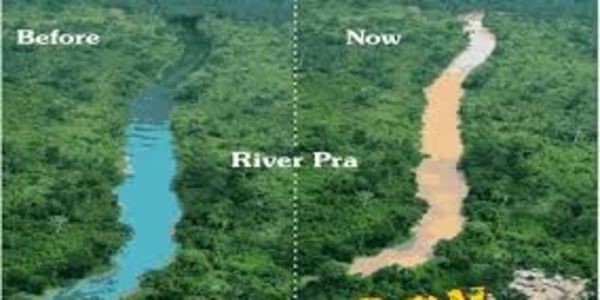

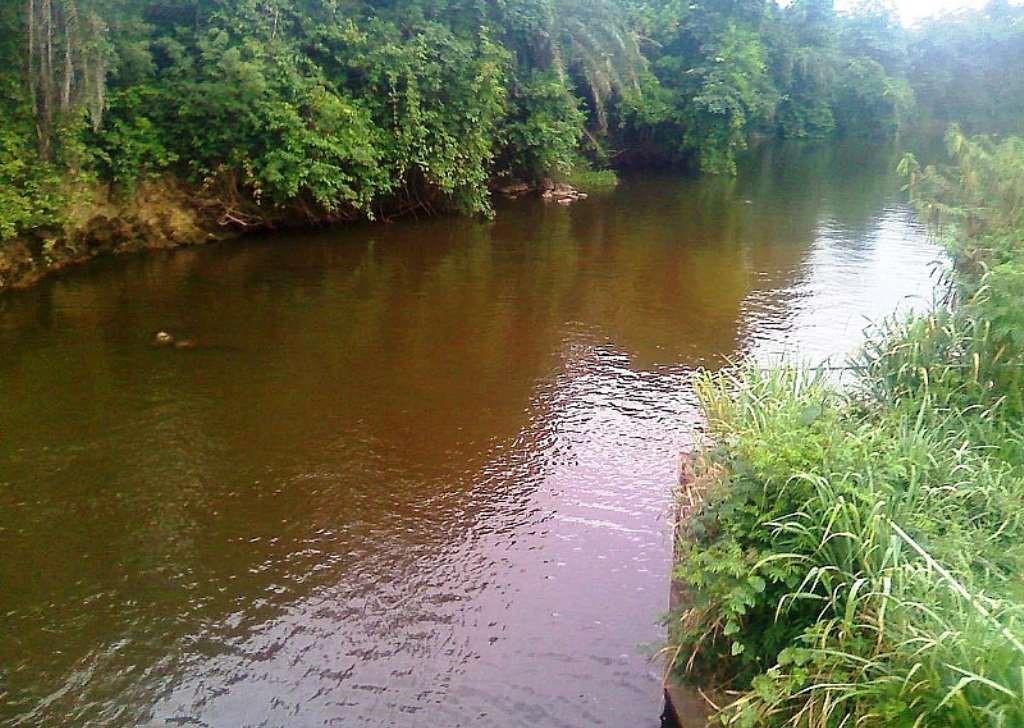
A study by the Ghana Water Company in 2020 had found out that the level of turbidity in water samples from drinking water sources in mining community such as Datuku in the Talensi-Nabdam District of Ghana, ranged from one nitrite-nitrogen turbidity to 447 nitrite-nitrogen turbidity mid-streams. The average level of turbidity at all of the sampling points exceeded the maximum admissible limits for drinking water quality set by the World Health Organization. The high turbidity in surface water, according to the company, was due to run off and waste water from gold mining.
Loss of agricultural land and deforestation
Ghana is a multi-party democratic country located on West Africa’s Gulf of Guinea, where it has a tropical climate that exhibits both wet and dry seasons. It is a nation known for its diverse wildlife, old forts, and diverse ecology.
In different sectors of the country, there are different crops grown of particular significance to its economy. There are sectors dedicated to growing cotton and tobacco. Other sectors are dedicated to primarily food crops like maize, plantain, cocoyam, and cassava.
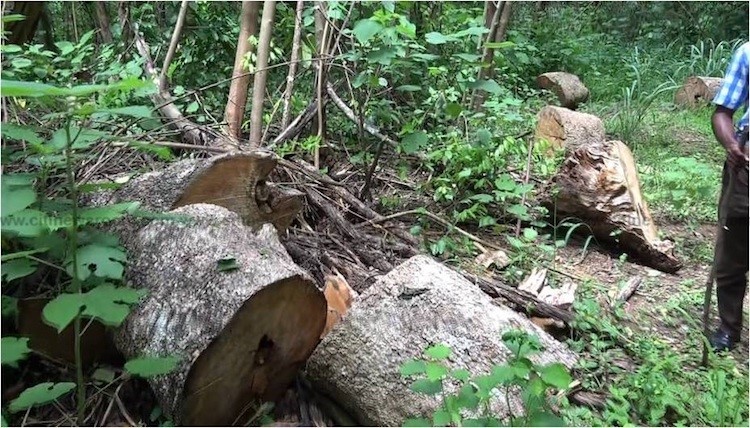
However, in the forest sector, tree crops including cocoa, palm oil, coffee, and rubber are especially important. The nation’s economy largely depends on cocoa bean farms as it is the world’s second-largest producer and exporter of cocoa beans. Approximately, 25% of the worlds cocoa supply originates in Ghana.
It is sad to note that within five years, illegal mining had degraded 2.5 km2 (4.4%) of the total area of Ghana’s reserve and the destruction of cocoa farms and water sources. Several hectares of fertile forestlands across the country have been destroyed due to the activities of illegal miners, especially within the last decade. The Desiri, Kutukrom, Kobro, Oda, Jimira, Atewa, and Tano-Offin forests in the Ahafo, Western, Ashanti, Eastern regions have all suffered from the illegality.
From the country’s original forest cover of 8.2 million hectares at the beginning of the 20th century, only an estimated 1.6 million hectares remain. The deforestation rate is 2.0% leading to an annual loss of around 135.000 hectares, according to Ghana’s Ministry of Lands and Natural Resources. Farming among citizens reduced from 90% to 76% after illegal mining. The relatively high cost involved in flushing out and the subsequent return of such miners poses a threat to sustainable forest management.
Business Day’s interviews with residents at five mining communities in the Obuasi Municipality of Ghana revealed that one major effect of surface mining is land degradation. First, removal of top soils, trees and vegetation with heavy machines had divested the land of its nutrients and renders the land infertile and unproductive for agricultural purposes. For instance, at Sanso Community, there were areas where the presence of rocks and other debris from mining activities had hindered plant growth and made it impossible for farming activities to take place.
Members of the Community complained that mining pits and heavy holes/trenches were created due to mining activities, rendering these areas inaccessible to the local people due to the hazards they pose. Field observations confirmed this issue, as pits were seen at Anyinam and Binsere communities with depths ranging from 50–75 metres. Even where such pits were backfilled, they were either covered with rocks which render the land infertile or converted into tailings dams where waste and other toxic materials are dumped.
Solomon Opoku-Ware, an Assembly Member of Kenyasi Community told Business Day that illegal mining activities had led to a complete change of land form suitable for agricultural and any other livelihood activity. Most farmers that were interviewed had lost their farm lands to mining.
“Three key pits have been excavated by illegal miners and heaps of sand from the pits covers large areas of land that cannot be used for any other purpose,” Opoku-Ware stated.
With the dependence on forest as a source of livelihood to local people, protection of the remaining natural forests may be a difficult goal to achieve given socio-economic constraints associated with mining, Opoku-Ware stated.
Almost 31,237 square kilometers of Ghana’s land area (13.1%) is under concession to mining companies. The total agricultural land lost due to large-scale gold mining in the Tarkwa, Bogoso/Prestea and Damang concessions is 4,935 hectares, representing 25.5% of Bogoso/Prestea and Damang and five per cent of the Tarkwa Nsuaem municipality’s total agricultural land.
This figure, 4,935 hectares, represents 45.42% of all agricultural land within the concessions. Although 30.63% of land in these three concessions was still under agricultural use as of 2020, it is threatened by future mining activities.
A study conducted by Ghana’s Ministry of Agriculture had evaluated 4,379.93 hectares of the Bogoso/Prestea concession over a 20-year period (1986–2006) where land use changes had taken place. The study revealed that agricultural land use decreased by 661.54 hectares between 1986 and 2006, representing a 15.45% reduction. This was due to the conversion of 325.83 hectares for mining activities (mine pits and mine waste dumps) and 335.71 hectares into other land uses, including settlements and roads to facilitate mining activities.
Agriculture is the most important economic sector across Ghana, contributing an estimated 30% to GDP since 2012 and employing the highest proportion of the labour market. Within the mining communities, domestic food production is low. Residents attributed this to mining activities, as farmland in the area has either been reserved for mining activities or degraded.
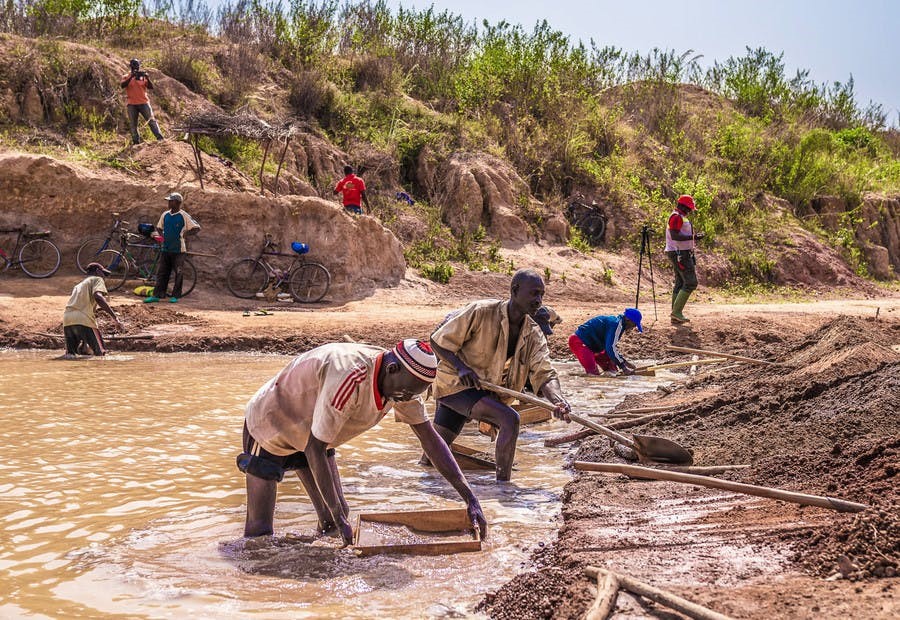
Consequently, little farmland is now available for farming activities. Much of the still available land has been contaminated with chemicals from mining activities. During discussions with James Osei, an official from the Ministry of Food and Agriculture Directorate at Obuasi, it was reported that cyanide and arsenic is present in land used for farming due to mining activities (surface mining).
Displaced farmers generally obtain alternative land by renting land or clearing nearby forests. Even where farmers are able to acquire alternative land, their landholding status, farm size and productivity were adversely affected. The loss of farmlands sometimes leads to situations where farmers who were previously landlords become tenants and must cultivate smaller farmlands.
In the case of the Teberebie community, some farmers had to walk as far as nine kilometres to get to their farms. Others who can afford public transport travel to their farms by taxi, but they only do this once or twice a week due to transport costs.
“The long distances to farmlands do affect our productivity due to increased tiredness and reduced time for working the land,” Kojo Boafo, a plantain farmer lamented.
Subsequently, there are land ownership problems, where cocoa farmers can’t stop illegal miners from entering their lands. Most farmers don’t own their lands and if the owner makes the decision to dig for gold then there is no choice but to agree.
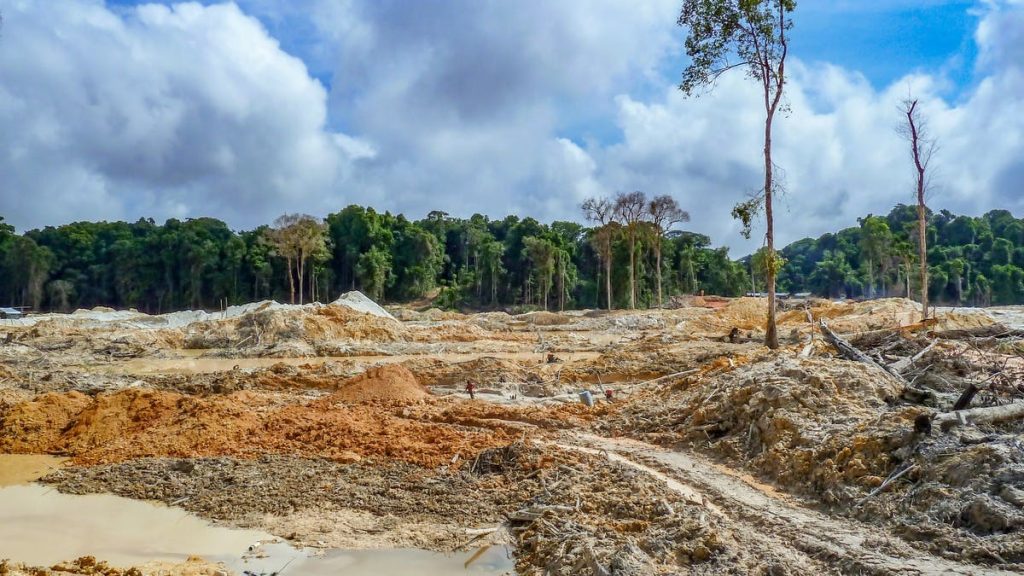
A 2016 Oxford Business Group report noted that in a typical illegal operation, foreigners pay bribes to access land or work with a Ghanaian illegal small-scale miner, providing them equipment and capital to increase production.
Ms. Reta Agorsor, a cocoa farmer in the east of Ghana, lost more than 500 cocoa trees in one fell swoop. One of her smallholder farms was destroyed when an excavator on the hunt for gold left unsightly and dangerous piles of soft clay and deep pits throughout the once fertile land. It also wiped out her family’s sense of financial stability.
Agorsor, 31 years of age, is one of the countless cocoa farmers through Ghana who have seen the land they have worked to harvest mined illegally, a practice locally called “galamsey” – and experts say it could lead to a decline in Ghana’s cocoa supply.
“Galamsey will give you money now, but it won’t last as the cocoa trees and farms will always be there,” Agorsor explained from her home in Akyem Adukrom community, a lush, rainforest-covered area of Ghana.
Due to Ghana’s complicated land ownership issues, cocoa farmers may not have the ability to stop mining. Often they don’t own the land, so if an owner wants to dig for gold, they have no choice but to acquiesce. Such was the case for Agorsor.
Even if farmers manage to hold on to their cocoa farms, finding labour can be a challenge, as young men leave cocoa farms to dig for gold, seeing it as at a more lucrative option, says Daniel Sarpong, economist and head of the University of Ghana’s department of agricultural economics and agribusiness. In July 2019, a mining pit collapsed in western Ghana, an area known for mining and cocoa. Twenty two people were killed in the accident.
Cocoa is big business for this West African nation, supporting about one million households like Agorsor’s. Ghana is the world’s second-largest producer and exporter of cocoa beans, accounting for up to 25 percent of global cocoa supply. Currently, the cocoa industry contributes around seven percent of gross domestic product and up to one quarter of the country’s export earnings. But the industry is under threat as small scale illegal gold mining, which began booming five years ago when gold prices were escalating, wipes out cocoa farms.
There are two main categories of land ownership today in Ghana namely, state lands, compulsorily acquired by the government through the invocation of appropriate legislation; and vested lands, belonging to customary authorities (stools, skins, clans and families).
In all, more than 80 percent of land in Ghana is under the control of chiefs, implying that most mineral operations, both by large-scale companies and illegal small scale miners occur on stool land. Some chiefs have turned their control over land into widespread de facto power at the local and national levels, effectively utilising it in exacting tribute from both legal and illegal galamsey dealers.
Dr. Abdul-Gafaru Abdulai, a Senior Lecturer at the University of Ghana Business School said, “given the substantial control that chiefs continue to wield over land and rural populations, it is crucial that chiefs be brought on board in the anti-galamsey crusade.”
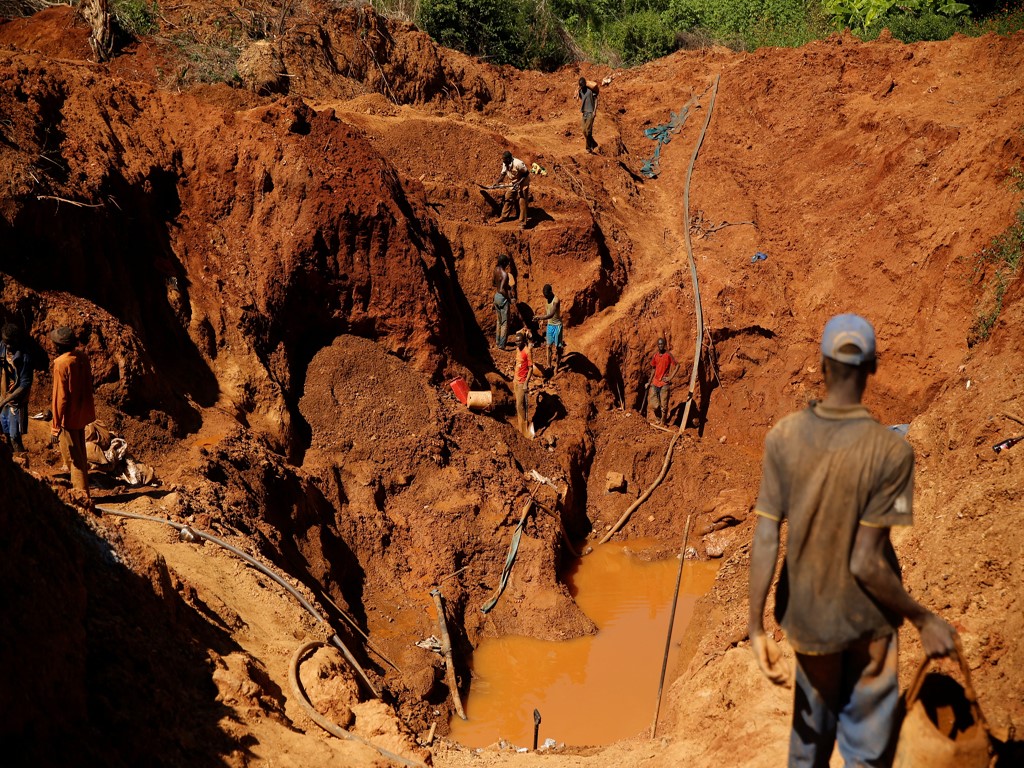
Air Pollution
Opoku-Ware told Business Day that air pollution in the Kenyasi community mainly comes from the dusty untarred roads that are continually used by illegal miner’s heavy-duty vehicles for transporting machines and other equipment to the mine sites.
“Chemical gases, fumes and smoke are not readily visible at the mining site, but during blasting, dust fills the atmosphere for some time. Chemicals used in the blasting process are also released into the atmosphere and the community has been prohibited from using rainwater,” Opoku-Ware continued.
Although some of the illegal miners Business Day contacted responded to the complaints of air pollution from dust and untarred roads by periodically sprinkling water on the roads, this is not done regularly. The situation, Opoku-Ware noted, can be linked to increased respiratory ailments such as flu and cold (catarrh) as reported by most residents.
Ghana’s Environmental Protection Agency in its 2019 Impact Assessments Report noted that “all dust at a high level of exposure has the potential to cause respiratory diseases and disorders and can worsen the condition of people with asthma and bronchial stiffness.”
Noise Pollution
The nuisance noise pollution creates for people in the mining communities have drawn the attention of local authorities. Currently, noise pollution standards are set for most companies that use heavy equipment and the noise emission levels of machinery are constantly assessed.
Noise pollution in the mining communities is mainly attributable to blasting at the mining sites and this noise is so great that building foundations in places like Kenyasi for instance are continually shaken and one can easily see cracks on most buildings in the community.
Noise from heavy duty trucks belonging to the miners is another major source of noise pollution in Kenyasi Community and residents complained that these heavy trucks are destroying the few tarred roads in the area and the noise they make when passing through the community is a source of annoyance.
Opoku-Ware indicated that people in the community are more disturbed by the noise from heavy duty trucks passing by than the noise from the blasts, due to the constant nature of this traffic.
A study of 252 miners by Ghana’s Ministry of Lands and Natural Resources in Ghana in 2018 had revealed that 23% of them had noise-induced hearing loss. A specific study in quarry centres revealed that three out of the five companies in the study recorded a mean hearing threshold level of more than 25 decibels. More than 25% of respondents at these companies reported hearing problems, with the highest prevalence among workers at the KAS Mining Company in Ghana.
Analysis by the Ministry of Lands and Natural Resources of the extent of the hearing loss among the respondents with hearing threshold level more than 25 decibels indicated that 75%, 18%, 5%, and 2% had mild, moderate, moderately severe and severe hearing loss respectively.
“This indicates the high incidence of ear damage to residents and workers in severely noise-exposed environments like the mining sites and the need to institute appropriate interventions to mitigate this risk,” the study noted.
Government’s interventions
The aforementioned horrific revelations, along with widespread media campaigns, has resulted in an unprecedented national consensus against galamsey, prompting actions from among a wide range of institutions, including the presidency, the judiciary, security services, and the Ministry of Lands and Natural Resources. Academic institutions have also been part of this renewed anti-galamsey crusade, with the University of Ghana responding by forming a new inter-disciplinary Research Group on Illegal Mining.
In July 2020, Ghana’s President Nana Akufo-Addo, said the fight to stop the illegal practice was so important and that he would put his presidency on the line to combat it, vowing to stop galamsey even if it turns voters against his government.
Recently, a military team was deployed by the Ghana Government to destroy mining equipment allegedly belonging to illegal miners who have invaded forest reserves also polluted water bodies in the country. Mining equipment such as chanfan, drilling machines and small instruments were destroyed as a move to halt illegal mining activities but the effort is not yielding any positive results.
The Ghanaian Authorities strongly believe Chinese nationals have a part to play in the illegal hunt for gold. Earlier this month, a group of six Chinese nationals was arrested, accused of illegal mining. In 2013, around 4,500 nationals from China, one of Ghana’s largest trading partners, were deported as part of a crackdown on illegal miners.
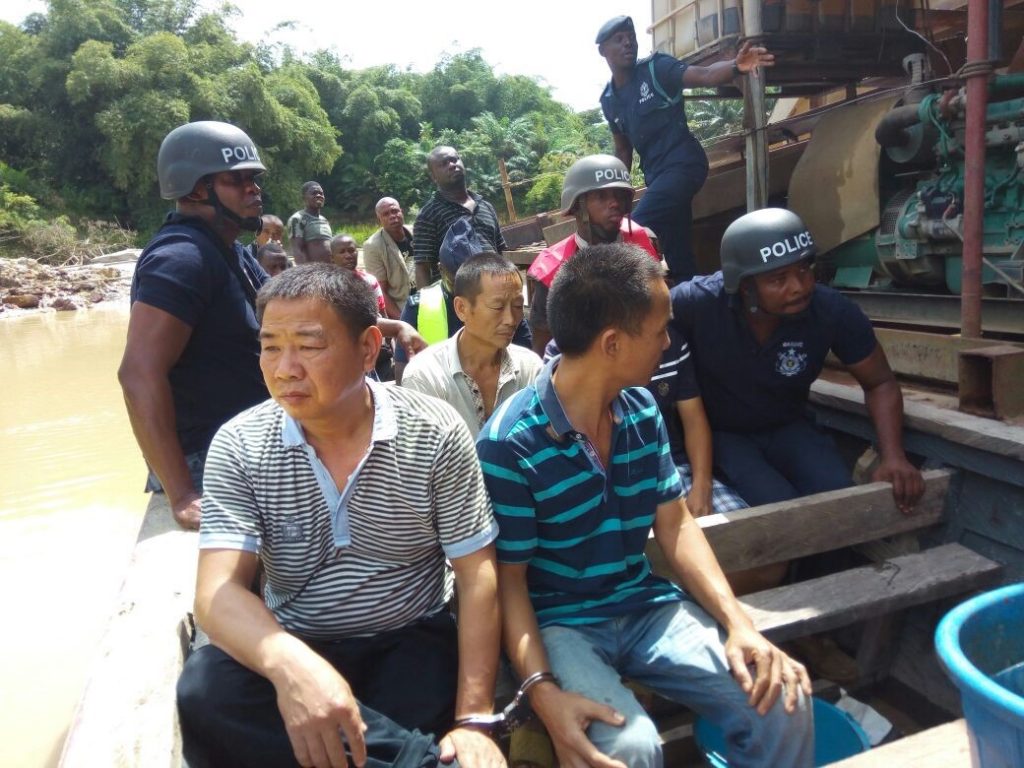
Curbing Environmental Impacts of Illegal Mining in Ghana- The way-forward
To address the concerns, the Ghanaian government last year implemented a temporary ban on all small scale mining in Ghana, legal and illegal. By May 2021, it is expected to release a five-year plan to stop illegal mining, which could include using drones to monitor land, reclaiming mined lands, finding alternative jobs for illegal miners and enforcing regulations.
Meanwhile, international organizations, as well as cocoa companies are working to make the cocoa industry in Ghana and neighbouring Cote d’Ivoire more sustainable. Leading global cocoa companies are working on a joint public-private framework of action.
“The framework will include combating illegal mining,” says Vincent Frimpong Manu, Ghana’s Coordinator of the World Cocoa Foundation, one of the organizations involved in the framework action.
Derrick Kumi, an illegal small-scale miner at Obuasi community recommended the following to curb the environmental posed by mining in Ghana. Firstly, he called for collaboration among governmental agencies, adding that, there was the need for an integrated approach involving all relevant stakeholders to address the multifaceted challenges confronting the mining sector.
He said there was the need for small-scale miners to form associations that interact regularly with all stakeholders in the mining sector. This, according to him, should involve representatives from each traditional council in the municipality. He further proposed that the various assemblies must provide alternative sources of treated drinking water for the affected communities.
“In addition, miners should be prevented from mining close to water bodies to avoid further pollution of nearby rivers,” he stated. This, according to him, entails strict implementation of the mining laws to ensure that proper mining procedures are adhered to.
Community members, Kumi stated, require education on environmental and health effects, such as water pollution and land degradation caused by mine operations in order to reduce the adverse effects of small-scale mining on the health of mining communities and the surrounding environment.
Contributing, Dr. Abdulai, who is also Honorary Research Fellow at the Global Development Institute, University of Manchester, UK said illegal mining also flourishes in Ghana because it serves the interests of a wide range of powerful actors in society.
“In this context, any successful anti-galamsey crusade would depend on the demonstration of sustained top-down elite commitment at the highest levels of government,” he advised.
He added that claims that the galamsey phenomenon is underpinned by poverty should not, in any way, be countenanced within policy circles, in as much as other social vices such as armed robbery and prostitution cannot be justified on grounds of high levels of youth unemployment.




























